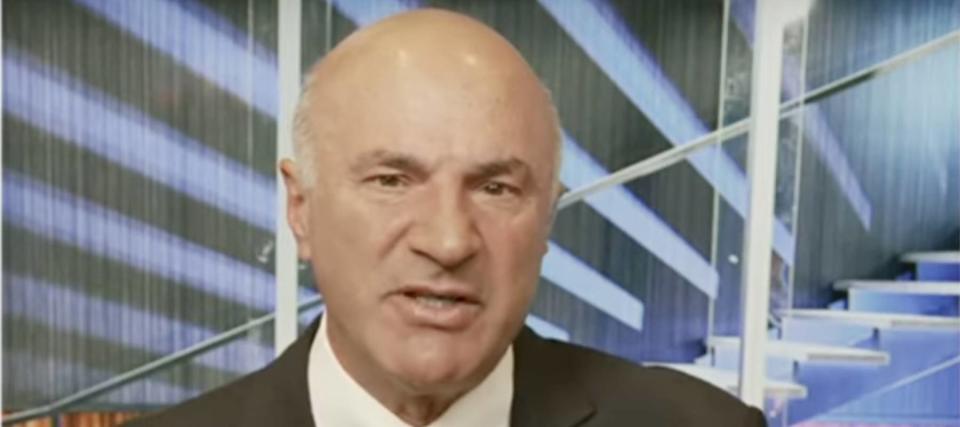'No one saw this coming': Kevin O’Leary says remote work trend is now hurting sectors other than real estate — here’s why he’s saying certain ‘banks are going to fail’

Office space has gone from a necessity to a liability in just a few short years, sparking concerns about a collapse in commercial real estate values across the country.
“No one saw this coming,” entrepreneur Kevin O’Leary said in a recent interview with Larry Kudlow of Fox Business. And O’Leary believes the issue will manifest itself in the regional banking sector. “These banks are going to fail,” he said, “because up to 40% of their portfolios … are in commercial real estate.”
Don't miss
Commercial real estate has outperformed the S&P 500 over 25 years. Here's how to diversify your portfolio without the headache of being a landlord
Worried about the economy? Here are the best shock-proof assets for your portfolio. (They’re all outside of the stock market.)
'A natural way to diversify': Janet Yellen now says Americans should expect a decline in the USD as the world's reserve currency — 3 ways you can prepare
But the shark doesn't stand alone in his fears. O’Leary’s concerns have been echoed across the business community for several months. In April, Warren Buffett told CNBC’s Rebecca Quick that some banks could face heavy losses on their commercial real estate paper — and his late business partner had Charlie Munger voiced concerns as well. And in September, economist Mohamed El-Erian also warned about emerging pain in the sector.
All their worries seem to hinge on the same issues: rising interest rates and plunging demand for office spaces.
Offices unnecessary
What's "unique," O’Leary said during the Fox Business interview, was that most of these office units can't be used again as the economy has changed. "No one saw this coming, but up to 40% of people who work in small businesses don’t return to offices anymore,” he added.
O’Leary said his own portfolio includes several small and mid-sized businesses that bank with the kind of regional firms he’s worried about, which he argues gives him unique insight into the emerging issue. He believes the fact that remote work has stuck around well beyond the pandemic has rendered many previously valuable units of commercial real estate somewhat unnecessary.
As of the end of Q3 2023, the overall vacancy rate of office space sat at 21% in the US, according to global real estate services company JLL.
The real estate services firm Cushman & Wakefield released a report in February that estimates there could be at least a billion square feet of empty office space across the United States by 2030. The increase would represent a 55% surge from pre-pandemic office-vacancy levels, according to the report.
Read more: Save big on your holiday shopping with an app that’s already saved Americans $160 million
Rising rates
While demand plunges, costs have risen. Interest rates are significantly higher now than just a few years ago, exerting additional pressure on an already vulnerable market. O’Leary believes the situation will trigger a correction in the commercial real estate sector.
“We have to refinance these buildings and many of them have no equity left in them,” he said. “Most of these buildings were built over the past 30 years, when interest rates were below 4%, many below 3%. … Now the Fed has raised rates to a 5.5% terminal rate, which means these mortgages have to be refinanced at 9% to 11%.”
At these substantially higher rates, he said, many office buildings across the nation won’t be “economically viable.” In his view, a doom loop has already begun; one of the major signals is a capital squeeze whereby regional banks with exposure to commercial real estate have restricted lending to small businesses. Without the ability to borrow money from regional banks, businesses could be left without operating capital, which might mean further cuts to workforce and office requirements and, by extension, even more pressure on commercial real estate.
“We’ve got the pressure at the regional banks, commercial real-estate collapse and small business not getting any capital,” O’Leary said. “This is all bad news.”
What to read next
Rich young Americans have lost confidence in the stock market — and are betting on these 3 assets instead. Get in now for strong long-term tailwinds
Here's how much the typical baby boomer has saved for retirement — how do you stack up right now?
Jeff Bezos and Oprah Winfrey invest in this asset to keep their wealth safe — you may want to do the same in 2024
This article provides information only and should not be construed as advice. It is provided without warranty of any kind.
